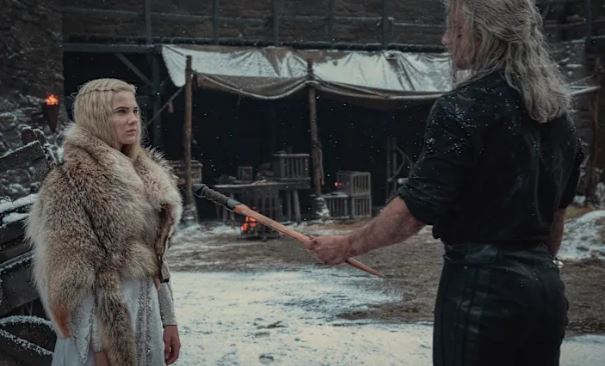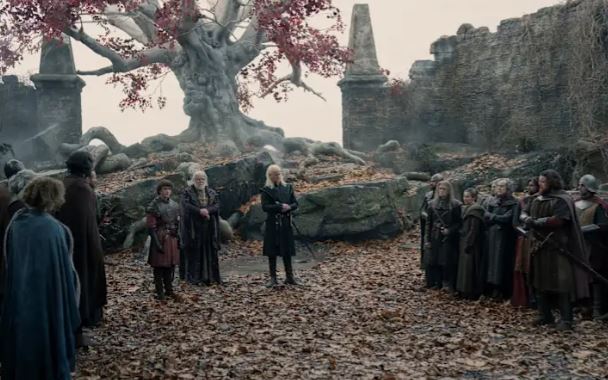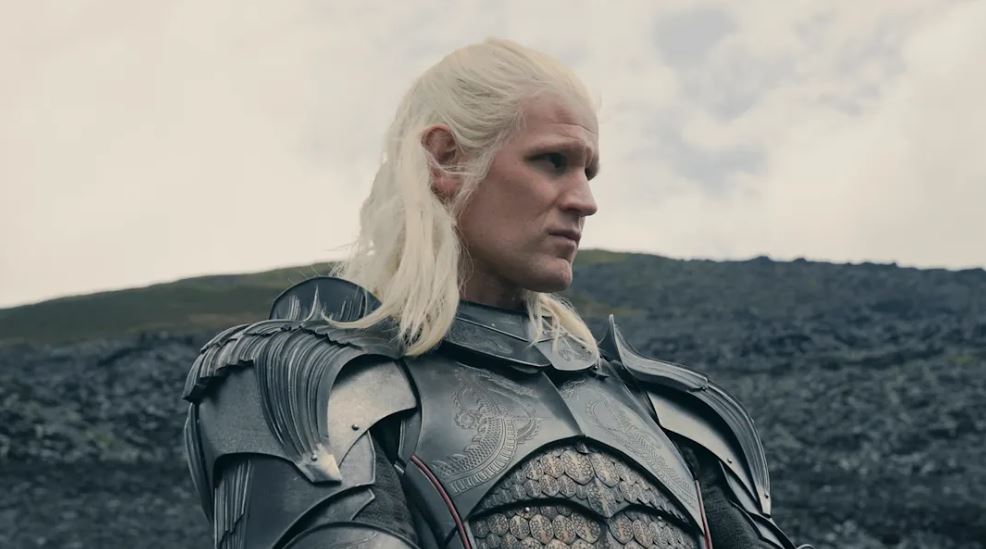There’s just something about a big cool set that tempts fantasy shows to make questionable choices.
Earlier this year, the second season of House of the Dragon aired and took our breath away with its sweeping depictions of dragon warfare and medieval familial backstabbing. It also left more than a few book fans with complicated feelings thanks to some rather large deviations the show made from its source material. Unlike HBO’s Game of Thrones, which was based off a book series that’s still being written by author George R.R. Martin, House of the Dragon has a finished story to work from, since the entire account of the Dance of the Dragons civil war is told in Martin’s book Fire & Blood.

That’s made some of the show’s changes a little hard to swallow, not least for Martin himself, who made waves last month when he publicly criticized the effect some of these deviations had on the overall narrative on his blog. (That blog post was swiftly deleted, HBO responded to it, and it’s generally been A Whole Thing. Here’s a comprehensive timeline, if you’re curious.)
Not every change in House of the Dragon was bad — there were plenty that I thought worked pretty well. But it’s hard to deny that the show has taken so many liberties with certain plotlines and characters that they’re now completely different than how they’re portrayed in Martin’s novel. Part of the reasoning that showrunner Ryan Condal has used to justify those changes is that Fire & Blood isn’t a traditional novel; it’s a fake “history book” with multiple, often conflicting accounts of events. Therefore, the show has to thread the needle of making its own version of things that fills in the blanks.
Condal’s explanation holds water in some places and not in others, and the more I’ve thought about it, the more I’ve come back around to one character in particular whose storyline was basically the opposite of his book counterpart: Daemon Targaryen, the rogue prince played by Matt Smith. In Fire & Blood, Daemon goes to the Riverlands and swiftly raises an army, then goes around harrying the allies of the Greens; it’s a stark reminder that the Greens were right to fear him, because he’s one of the single most seasoned army commanders in Westeros at this point in history. In the show, Daemon holes up at the haunted castle of Harrenhal and bungles one thing after another until he’s able to finally get his army together by the season 2 finale, all while going on a vision quest that essentially served as an excuse to bring back different cast members who are no longer in the show each week for cameos.
Those cameos were thrilling at first, but by the time King Viserys rolled up and started repeating a monologue from the first season, it was hard to drum up much excitement.
While there were things I liked about Daemon’s storyline, on the whole I think it fell short for a lot of people. And unlike other events such as, say, Alicent and Rhaenyra’s Sister Act meet-up at the sept in King’s Landing, I don’t think Daemon’s story is an example of the show filling in the blanks we didn’t see on the page. Rather, I think that House of the Dragon was lured into repeating a mistake that another big fantasy show also made in its second season: Netflix’s The Witcher.
The danger of an iconic TV show set

As a fan of The Witcher books, my opinion is that season 2 of Netflix’s television series is unequivocally the worst season of the show by far, primarily because it went so far afield of the source material as to be basically unrecognizable. The book that season 2 is based on, Blood of Elves, is probably the weakest in Andrzej Sapkowski’s Witcher Saga, so it’s understandable that the team behind the show felt they needed to switch things up a bit (though not quite to the degree they did, as evidenced by the fact that they started off season 3 with a bunch of Blood of Elves material that didn’t make the cut for season 2).
However, one element that really destabilized the season was its firm commitment to focusing on Kaer Morhen, the castle Geralt of Rivia and his fellow witchers call home. In the book, Geralt and his protégé Ciri only spend two chapters there while she’s trained by the rest of the witchers. Then, the pair hit the road with Triss Merigold and continue on their adventures. That’s the only time we see Kaer Morhen at all in Sapkowski’s novels.
The show, however, expanded Kaer Morhen into the single most-used setting of season 2. Geralt and Ciri arrive there in the second episode, and pretty much every episode afterward for the rest of the season features some character or other at Kaer Morhen. The season finale even centers around a fight with monsters at the witchers’ keep, which has no basis at all in the source material.
I’ve long held that part of the reason The Witcher made those changes is because they just really, really liked the Kaer Morhen set. And who could blame them? It may not appear in a lot in Sapkowski’s books, but Kaer Morhen does feature heavily in the video game series by CD Projekt Red, which brought millions of new fans to the series. Those fans were understandably excited to see Kaer Morhen in the show, and probably would have been disappointed to only get a glimpse at it for an episode or two. But when a setting which barely features at all in the books becomes the entire focus of the season, things have probably gone a bit overboard.
What House of the Dragon did with Daemon and Harrenhal felt very similar. Harrenhal is Daemon’s base in the Riverlands for a while in Fire & Blood as he goes around leading raids, but in the show he barely ever leaves the castle. I think that, just as The Witcher really wanted to make full use of their Kaer Morhen set, House of the Dragon really wanted to make use of this big new Harrenhal set they’d constructed for season 2. And in both cases, I think it led the shows astray.
There are production reasons for this which are pretty reasonable, of course. Building massive castle sets like Kaer Morhen or Harrenhal isn’t cheap, and I imagine it’s hard for a show to justify that kind of investment unless they’re going to make ample use of it. And Harrenhal is an iconic location; few other keeps in Westeros have as much history and mystery as the dreaded castle of Harren the Black.
But if the trade off to building a massive Harrenhal set is that it means Daemon Targaryen, formerly one of the most interesting characters in the entire series, is trapped there for a whole season, I don’t know that it was worth it. Daemon’s arc was one of the most widely criticized from House of the Dragon’s second season. I think House of the Dragon followed in The Witcher’s footsteps by building a big, cool set and justified that expense by building whole new plotlines to use it. The problem is those plotlines just didn’t work as well as anything laid out in the source material, and they weakened both shows as a whole.
Now that Daemon has his army assembled, he’ll finally have to leave Harrenhal in season 3. But I doubt that means we’ll be seeing much less of that beautiful set. In Fire & Blood, another important character takes up residence there later in the Dance of the Dragons, so I imagine we’ll be spending plenty more time at the haunted castle. Hopefully House of the Dragon can find a balance that allows it to avoid making the same mistakes with that character in season 3 as they did with Daemon.
